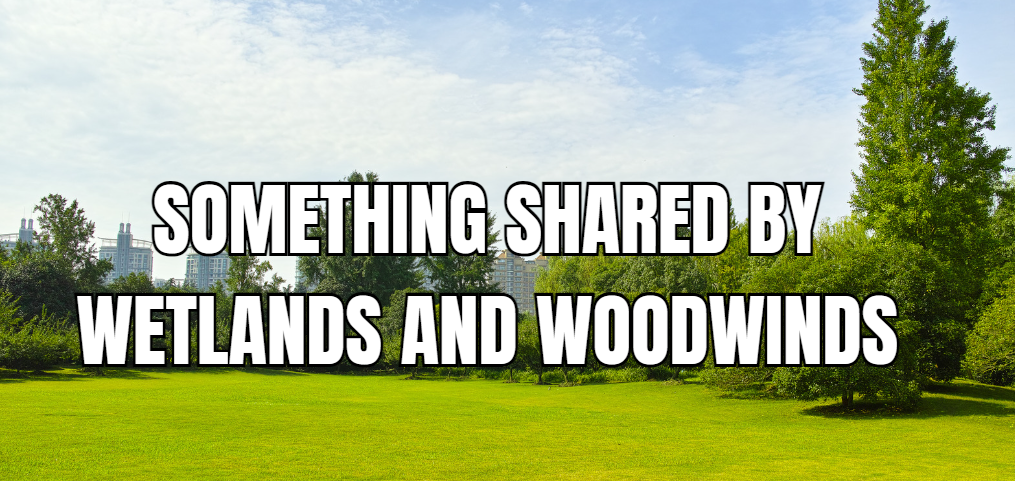Wetlands and woodwind instruments—at first glance, these two subjects might seem worlds apart. Wetlands are ecosystems teeming with diverse flora and fauna, while woodwinds are musical instruments that produce sound through the vibration of reeds or air columns.
However, a surprising connection binds these two seemingly disparate entities: the humble reed. In this article, we will explore the fascinating link between wetlands and woodwinds, delving deep into the world of reeds, their ecological significance, and their role in music.
Through this exploration, we will uncover the profound importance of reeds in both the natural world and the world of music, offering unique insights that go beyond the surface. This article is optimized for the keyword “something shared by wetlands and woodwinds,” targeting readers in the USA who are interested in ecology, music, and the unexpected connections between the two.
Contents
- 1 Introduction to Wetlands and Woodwinds
- 2 The Role of Reeds in Wetlands
- 3 The Role of Reeds in Woodwind Instruments
- 4 The Intersection of Ecology and Music: Reeds as a Shared Resource
- 5 FAQs about “Something Shared by Wetlands and Woodwinds”
- 5.1 1. What is the connection between wetlands and woodwind instruments?
- 5.2 2. How do reeds contribute to the health of wetland ecosystems?
- 5.3 3. What types of woodwind instruments use reeds?
- 5.4 4. What is the significance of sustainable reed harvesting?
- 5.5 5. How are reeds for woodwind instruments made?
- 6 Conclusion: The Shared Legacy of Reeds in Wetlands and Woodwinds
Introduction to Wetlands and Woodwinds
Understanding Wetlands
Wetlands are among the most vital ecosystems on the planet, playing crucial roles in water purification, flood control, and biodiversity support. These areas are characterized by the presence of water, either permanently or seasonally, which creates conditions conducive to the growth of plants adapted to saturated soil. Wetlands are found all over the world, from the swamps of the southeastern United States to the peatlands of northern Europe.
Wetlands can be classified into several types, including marshes, swamps, bogs, and fens. Each type has its own unique characteristics and supports a diverse array of plant and animal life. Wetlands are often referred to as the “kidneys of the Earth” because of their ability to filter pollutants from water, making them essential for maintaining clean and healthy ecosystems.
Introduction to Woodwind Instruments
Woodwind instruments, a staple of orchestras and bands, are known for their distinctive sounds, ranging from the haunting melodies of the oboe to the mellow tones of the bassoon. These instruments produce sound through the vibration of air, either by blowing across an opening (as in flutes) or by vibrating a reed (as in clarinets and saxophones). The term “woodwind” is somewhat of a misnomer, as not all instruments in this family are made of wood; some, like the saxophone, are made of metal.
Woodwinds are divided into two main categories: flutes and reed instruments. Flutes, including the piccolo and concert flute, produce sound when air is blown across a hole in the instrument. Reed instruments, on the other hand, rely on the vibration of a reed, a thin strip of material (usually cane) that is set into motion by the player’s breath.
So, what is the connection between these two seemingly unrelated topics? The answer lies in the reed. In wetlands, reeds are tall, slender plants that grow in shallow water and along the edges of rivers and lakes. In the world of music, reeds are the essential component of many woodwind instruments, responsible for creating the instrument’s sound. This shared element—the reed—forms the basis of our exploration, as we delve into the significance of reeds in both wetlands and woodwind instruments.
The Role of Reeds in Wetlands
The Ecological Importance of Wetlands
Before diving into the specifics of reeds, it’s essential to understand the broader context of wetlands and their ecological importance. Wetlands serve as habitats for a vast array of species, from amphibians and birds to insects and mammals. They act as natural water filters, trapping sediments and pollutants, and they store carbon, helping to mitigate climate change. Wetlands also play a crucial role in flood control, absorbing excess water during heavy rains and releasing it slowly, reducing the risk of floods downstream.
What Are Reeds in Wetlands?
In wetland ecosystems, reeds refer to a variety of tall, grass-like plants that thrive in aquatic environments. The most common type of reed found in wetlands is the common reed (Phragmites australis), a plant that can grow up to 20 feet tall and forms dense stands along the edges of lakes, rivers, and marshes. Reeds have hollow stems and are typically found in areas with standing or slow-moving water.
Reeds are incredibly resilient plants, capable of surviving in a wide range of environmental conditions. They play a vital role in wetland ecosystems, providing habitat and food for a variety of wildlife. Reeds also help stabilize soil and reduce erosion, and their dense root systems filter water, removing pollutants and improving water quality.
Reeds as a Habitat
Reeds create a unique habitat within wetlands, supporting a diverse range of species. Birds, such as marsh wrens and reed warblers, build their nests among the reeds, while amphibians like frogs and toads find shelter in the dense vegetation. The root systems of reeds provide a safe haven for fish and invertebrates, and the plants themselves are a source of food for herbivores like beavers and muskrats.
The Role of Reeds in Carbon Sequestration
Wetlands, including those dominated by reeds, are significant carbon sinks. The dense vegetation in wetlands captures carbon dioxide from the atmosphere through photosynthesis and stores it in plant biomass and soils. Reeds, with their extensive root systems, contribute to this process by trapping organic matter and slowing down decomposition, which results in the accumulation of carbon-rich peat in some wetland areas. This makes wetlands critical in the fight against climate change, as they help reduce the amount of carbon dioxide in the atmosphere.
Reeds and Water Quality
One of the most important functions of reeds in wetlands is their ability to improve water quality. Reeds act as natural filters, trapping sediments, nutrients, and pollutants that enter wetlands from surrounding land. The root systems of reeds slow down water flow, allowing sediments to settle out of the water, while the plants themselves absorb excess nutrients like nitrogen and phosphorus, which can otherwise lead to harmful algal blooms. This filtering process helps maintain clean water in wetlands, which is essential for the health of the entire ecosystem.
The Role of Reeds in Woodwind Instruments
The History of Reed Instruments
Reed instruments have a long and rich history, dating back thousands of years. The earliest reed instruments were likely simple flutes made from reeds or bamboo, used by ancient civilizations for ceremonial and recreational purposes. Over time, reed instruments evolved, becoming more complex and refined, eventually leading to the development of the woodwinds we know today.
The use of reeds in musical instruments can be traced back to ancient Egypt, where the arghul, a double-pipe reed instrument, was used in religious and cultural ceremonies. Similar instruments have been found in ancient Mesopotamia, Greece, and Rome. In medieval Europe, reed instruments like the shawm and crumhorn were popular in both secular and sacred music.
How Reeds Work in Woodwind Instruments
In woodwind instruments, reeds are thin strips of material that vibrate to produce sound. Reeds can be classified into two main types: single reeds and double reeds. Single reeds are used in instruments like the clarinet and saxophone, while double reeds are used in instruments like the oboe, bassoon, and English horn.
Single Reeds
Single reeds are made from a piece of cane or synthetic material that is shaped into a flat, thin strip. The reed is attached to the mouthpiece of the instrument, and when the player blows air into the mouthpiece, the reed vibrates against the mouthpiece, creating sound. The pitch and tone of the sound can be adjusted by changing the pressure of the air, the position of the reed, and the shape of the mouthpiece.
Double Reeds
Double reeds consist of two pieces of cane that are bound together and attached to a metal tube called a staple. The two reeds vibrate against each other when the player blows air through them, producing a rich, complex sound. Double reeds are more challenging to play than single reeds, as they require greater control of breath and embouchure (the way the mouth interacts with the reed).
The Craftsmanship of Reeds
Creating high-quality reeds for woodwind instruments is an art form in itself. The process begins with selecting the right type of cane, typically Arundo donax, a species of giant cane native to the Mediterranean region. The cane is harvested, dried, and cut into sections, which are then shaped and filed to create the reed.
Reed makers must carefully balance the thickness, strength, and flexibility of the reed to ensure it produces the desired sound. The process often involves handcrafting and fine-tuning each reed to match the specific needs of the musician. Professional musicians may spend hours adjusting their reeds, scraping and sanding them to achieve the perfect balance between responsiveness and tone.
The Role of Reeds in Shaping Sound
Reeds play a crucial role in shaping the sound of woodwind instruments. The thickness, length, and curvature of the reed all affect the pitch, tone, and timbre of the instrument. For example, a thicker reed will produce a darker, richer sound, while a thinner reed will produce a brighter, more focused sound.
The flexibility of the reed also affects the ease of playing. A more flexible reed requires less air pressure to vibrate, making it easier to play soft notes, while a stiffer reed requires more air pressure but produces a louder, more powerful sound. Musicians must carefully select and adjust their reeds to match their playing style and the specific requirements of the music they are performing.
The Evolution of Reed Instruments
Over the centuries, reed instruments have evolved in design and complexity, leading to the development of a wide range of woodwinds used in modern music. Innovations in reed making, instrument design, and materials have allowed musicians to achieve greater control over their sound, enabling more expressive and nuanced performances.
In the 18th and 19th centuries, the development of key systems for woodwind instruments allowed for greater flexibility and precision in playing. The Boehm system, invented by Theobald Boehm in the 1840s, revolutionized the design of flutes and clarinets, making them easier to play and expanding their range and versatility. Similar advancements were made in the design of oboes, bassoons, and saxophones, leading to the modern woodwinds we use today.
The Cultivation of Reeds for Instrument Making
The connection between wetlands and woodwinds becomes even more apparent when we consider the cultivation of reeds for instrument making. The Arundo donax cane, used to make reeds for woodwind instruments, is typically grown in wetland areas, where the conditions are ideal for its growth. The cultivation of this cane is an important industry in regions like southern France, Spain, and Italy, where the climate and soil are well-suited to producing high-quality reeds.
The process of cultivating cane for reeds is labor-intensive and requires careful management of the wetland environment. Farmers must ensure that the cane receives enough water and nutrients while protecting it from pests and diseases. The cane is typically harvested after two to three years of growth, when it has reached the right size and maturity for reed making.
The Sustainability of Reed Harvesting
As the demand for high-quality reeds continues to grow, there is increasing concern about the sustainability of reed harvesting. Overharvesting of cane can lead to the degradation of wetland ecosystems, reducing biodiversity and disrupting the natural balance of the environment. To address these concerns, efforts are being made to promote sustainable reed harvesting practices, including the use of environmentally friendly farming methods and the protection of natural wetland habitats.
Sustainable reed harvesting not only benefits the environment but also ensures a steady supply of high-quality reeds for musicians. By preserving wetland ecosystems, we can continue to enjoy the rich sounds of woodwind instruments for generations to come.
The Cultural Significance of Reeds in Music and Ecology
Reeds hold cultural significance in both music and ecology. In music, reeds are essential for creating the distinctive sounds of woodwind instruments, which have played a central role in the development of various musical traditions around the world. In ecology, reeds are vital components of wetland ecosystems, supporting a wide range of plant and animal life and contributing to the health and stability of the environment.
The intersection of music and ecology highlights the importance of reeds as a shared resource, connecting the natural world with human culture. This connection underscores the need to protect and preserve wetlands, not only for their ecological value but also for their role in sustaining the cultural heritage of music.
1. What is the connection between wetlands and woodwind instruments?
The connection between wetlands and woodwind instruments lies in the reed. In wetlands, reeds are tall, grass-like plants that grow in aquatic environments. In woodwind instruments, reeds are thin strips of material that vibrate to produce sound. The Arundo donax cane, used to make reeds for woodwind instruments, is typically grown in wetland areas, making reeds a shared element between these two seemingly unrelated topics.
2. How do reeds contribute to the health of wetland ecosystems?
Reeds play a vital role in wetland ecosystems by providing habitat and food for a variety of species, stabilizing soil, reducing erosion, and improving water quality. Their dense root systems trap sediments and pollutants, helping to filter water and maintain clean, healthy ecosystems. Reeds also contribute to carbon sequestration, helping to mitigate climate change by capturing and storing carbon dioxide.
3. What types of woodwind instruments use reeds?
Woodwind instruments that use reeds include clarinets, saxophones, oboes, bassoons, and English horns. These instruments rely on the vibration of a single or double reed to produce sound. The reed’s thickness, length, and flexibility all play a crucial role in shaping the instrument’s pitch, tone, and timbre.
4. What is the significance of sustainable reed harvesting?
Sustainable reed harvesting is important for preserving wetland ecosystems and ensuring a steady supply of high-quality reeds for musicians. Overharvesting of cane can lead to environmental degradation, reducing biodiversity and disrupting the natural balance of wetlands. By promoting sustainable farming practices and protecting natural habitats, we can continue to enjoy the cultural and ecological benefits of reeds.
5. How are reeds for woodwind instruments made?
Reeds for woodwind instruments are typically made from the Arundo donax cane, which is harvested, dried, and cut into sections. The sections are then shaped and filed to create the reed, with careful attention to thickness, strength, and flexibility. Reed makers often handcraft and fine-tune each reed to meet the specific needs of the musician, ensuring the best possible sound quality.
The connection between wetlands and woodwind instruments through the reed is a fascinating example of how natural resources can bridge the gap between ecology and culture. Reeds are not only essential for the health and stability of wetland ecosystems but also play a crucial role in the creation of music.
By understanding and appreciating this connection, we can better appreciate the importance of protecting wetlands and promoting sustainable practices in reed harvesting.
The shared legacy of reeds in wetlands and woodwinds reminds us that the natural world and human culture are deeply intertwined. By preserving the environment and supporting sustainable practices, we can ensure that the beauty of both nature and music continues to thrive for generations to come.













































